
As cities grow, architects and urban planners increasingly turn to biophilic design to reconnect urban spaces with nature. Biophilic design emphasizes the integration of natural elements into buildings, promoting human well-being, environmental sustainability, and aesthetic appeal. This approach is reshaping how city dwellers experience their surroundings, offering psychological and practical advantages. And thanks to information available at https://www.diebrandenburger.de/ratgeber/wie-kuenstliche-intelligenz-die-architektur-revolutioniert-chancen-herausforderu-3003635, we can now understand the importance of AI in the process.
Enhances Mental and Physical Well-Being
Urban living often exposes residents to high stress levels, noise pollution, and limited access to green spaces. Biophilic design mitigates these challenges by incorporating natural light, indoor plants, water features, and open green areas into architectural layouts. Such environments can reduce stress, improve concentration, and even enhance cognitive function. Biophilic buildings contribute to healthier lifestyles and increased overall satisfaction for occupants by fostering a sense of calm and connection to nature.
Improves Air Quality and Environmental Performance
Integrating greenery into urban buildings contributes significantly to environmental sustainability. Plants and green walls act as natural air filters, absorbing pollutants and producing oxygen, which enhances indoor air quality. Green roofs and terraces reduce heat absorption, mitigating the urban-heat island effect and lowering energy consumption for cooling. By embedding nature into structures, architects can improve environmental performance while offering tangible benefits to residents and neighboring communities, creating livable and ecologically responsible spaces.
Increases Property Value and Market Appeal

Properties incorporating biophilic elements tend to attract higher interest from tenants, buyers, and investors. Natural aesthetics, ample sunlight, and access to greenery enhance buildings’ perceived quality and desirability. Studies indicate that occupants are willing to pay premium rents for properties with biophilic features due to their positive effects on well-being and lifestyle. Furthermore, developers gain a competitive edge by highlighting sustainability and wellness features, demonstrating a forward-thinking approach that aligns with modern consumer expectations.
Promotes Community and Social Interaction
Biophilic design often incorporates communal gardens, rooftop terraces, and shared green spaces, fostering social interaction among residents. These natural areas encourage collaboration, relaxation, and recreational activities, strengthening urban neighborhoods’ sense of community. Integrating biophilic principles in public and semi-public spaces enhances social cohesion and creates environments where people feel connected to each other and their surroundings. This social dimension of design reinforces the value of human-centered urban planning.
Supports Sustainable Urban Development

Incorporating nature into architecture aligns with broader goals of sustainable urban development. Biophilic design encourages using renewable resources, energy-efficient systems, and environmentally conscious building practices. By reducing energy consumption, enhancing biodiversity, and promoting ecological responsibility, these designs help cities move toward greener and more sustainable futures. Architects and developers can adopt biophilic principles as part of a comprehensive strategy to meet sustainability targets, improve resilience, and contribute positively to urban ecosystems.
Biophilic design represents a transformative approach in urban architecture, blending aesthetics, sustainability, and human well-being. The benefits are substantial and far-reaching, from enhancing mental and physical health to improving air quality, boosting property values, fostering social interaction, and supporting sustainable development.…

Homes are no longer just walls and roofs. Technology has entered daily living in ways that would have seemed impossible a generation ago. Smart devices now run lighting, heating, security, and even grocery lists.While some homeowners focus on taking their home’s to the next level by integrating the latest technology. others focus on future-proofing their property to add value. If you are interested to know about it, visit immobilien.de.
Why Smart Features Matter
 Smart home features offer more than convenience. They bring a sense of control and efficiency to owners. A home that automatically adjusts temperature or locks itself at night feels safer and more cost-effective. This growing demand for integrated technology is turning smart features into key drivers of property value. Buyers are willing to pay more for homes that already have these systems in place.
Smart home features offer more than convenience. They bring a sense of control and efficiency to owners. A home that automatically adjusts temperature or locks itself at night feels safer and more cost-effective. This growing demand for integrated technology is turning smart features into key drivers of property value. Buyers are willing to pay more for homes that already have these systems in place.
The Role of Energy Efficiency
Energy costs are always a concern for homeowners. Smart thermostats, lighting, and appliances make a big difference over time. Lower monthly bills create real savings and add to a property’s long-term financial strength. As people seek greener lifestyles, efficiency becomes part of what makes a home unique in the market. Properties that cut waste often stand out and attract faster offers.
Security as a Priority
Home security has been transformed by technology. Cameras, sensors, and alarms connected through smartphones create peace of mind. Buyers today see these systems as essentials rather than luxuries. A well-secured property signals safety, which raises confidence and perceived value. For families, this factor often becomes a deciding point.
Long-Term Market Trends
The next decade will likely see smart technology move from being optional to standard. Much like indoor plumbing or central heating in the past, what was once rare will become common. For homeowners, this means adapting sooner rather than later. Properties without upgrades may struggle to compete. To ensure long-term worth, embracing technology is often the smarter choice.
Connectivity and Lifestyle

The modern home is part of a wider digital lifestyle. Strong internet connections, smart entertainment systems, and voice-controlled devices are no longer extras. They are becoming basic expectations. Buyers often test whether a property can support these functions. When it does, they can picture themselves living there with ease. That vision makes the home more appealing and more valuable.
Balance the Costs and Benefits
Not every smart upgrade adds equal value. Some devices are trendy but fade quickly. Others, like energy management or security, offer lasting appeal. Homeowners should plan carefully and focus on features that bring the utmost benefit to daily living. Installing systems that align with buyer priorities ensures that money spent translates into property value.
Smart homes are not a passing phase. They represent the future of housing. As technology grows, it will continue to influence buyer choices and property prices. Homes that blend comfort, efficiency, and security will lead the market. For sellers, that means preparing now. For buyers, it signals that the home they choose today may be worth more tomorrow because of its technology.…

Harmony in interior design is the invisible thread that connects every part of a room. It’s what makes a space feel calm, balanced, and whole. You might not be able to name it when you walk in, but you can feel it. It’s that moment when nothing stands out awkwardly, and everything just fits even when pieces are different. Harmony isn’t about matching. It’s about creating a relationship between things. When done right, it turns a collection of items into a unified experience. For those looking for tips for achieving harmony in home design, repeat colors in different areas, balance shapes and sizes, and make sure each element feels connected in mood or tone. Keep furniture and decor aligned with the room’s function to support both flow and comfort.
The Basics of Harmony
Harmony in design means everything in a space works together. That includes furniture, colors, textures, shapes, and even how the space is used. It doesn’t mean every item must look the same. Instead, it’s about how these elements relate. When a room is in harmony, nothing feels forced or out of place. The eye moves comfortably from one area to the next. There’s no tension, no distraction. Just a sense of ease.
Why Harmony Matters
Without harmony, a space feels unsettled. Even if it’s full of beautiful things, it might still look busy or disconnected. That can affect how people feel when they’re in it. Harmony helps ground the room. It supports function and comfort. It makes sure that style doesn’t get in the way of living. And while it’s easy to focus on standout pieces, the real success of a room often comes down to how everything works as a whole.

Color as a Connector
Color is one of the most effective tools for achieving harmony. That doesn’t mean using the same shade on every wall or piece of furniture. It’s about building a palette where tones complement rather than compete. Soft transitions between hues can create a calming effect. Repeating certain colors in different parts of the room on a rug, in artwork, or through accents can help tie it all together. This repetition helps guide the eye and brings unity to the design.
Shape and Scale
Shapes and proportions also play a role. A room full of oversized furniture might feel crowded. A space with only small, delicate items could seem sparse. The key is balance. Combine different shapes and sizes, but keep their relationships in mind. If your sofa has soft, rounded arms, a coffee table with similar curves will echo that form. If one piece is bold or angular, soften it with other elements. These small choices help ensure the parts support the whole.
Texture and Material Consistency
Just like color and shape, textures can build harmony. Combining too many textures without a clear relationship can make a space feel chaotic. Stick to a few key materials and echo them in different areas. For example, if you have natural wood on a dining table, use the same tone or grain on a shelf or picture frame. Mix in contrast sparingly like linen against metal or stone but use these differences to support the room’s feel, not fight against it.
Function Supports Flow
Harmony isn’t only visual. It’s also practical. A harmonious room should feel good to live in. That means items are placed where they make sense, and traffic flow feels natural. If you’re constantly bumping into furniture or straining to reach something, the space isn’t working. Good layout choices ensure the room supports daily life. It should reflect how you use it, not just how you want it to look. This blend of beauty and purpose is where harmony truly shines.

Personal Touches, Not Clutter
You don’t have to hide your personality to create a harmonious room. Harmony thrives on personal expression when it’s done thoughtfully. Include unique pieces, family items, or meaningful artwork, but place them intentionally. Let them be part of the larger story the space tells. Random decor can interrupt the flow, while carefully chosen elements can add richness and meaning. Harmony allows space for individuality, but with the utmost consideration for balance.
In Conclusion
Creating harmony in interior design doesn’t mean following a strict formula. It’s more about feeling than rules. Trust your eye, but also step back and look at the space as a whole. Ask yourself: Does this room feel calm? Do the pieces relate? Is anything visually jarring? Adjust from ther…

Hiring a home cleaning service might seem like a luxury, but it often brings benefits that go far beyond simply having a tidy house. From boosting your peace of mind to improving your home’s overall health and longevity, professional cleaners offer much more than surface-level results. For many homeowners, services now extend beyond the indoors—Exterior Cleaning has become just as important for maintaining curb appeal and property value. Whether you’re juggling a busy schedule or simply want to create a healthier environment for your family, bringing in the experts can significantly enhance your day-to-day living experience in unexpected ways. Here are the hidden benefits of getting home cleaning services.
Creates a Healthier Living Environment
 Professional cleaners don’t just tidy up—they also target areas of the home that are prone to germs, allergens, and bacteria. From disinfecting high-touch surfaces to removing mold and dust mites, a thorough cleaning helps prevent illnesses and improves indoor air quality. This is especially valuable for households with children, elderly family members, or anyone with allergies or respiratory conditions. Regular deep cleaning ensures that your home isn’t just clean on the surface but is also safer and healthier overall.
Professional cleaners don’t just tidy up—they also target areas of the home that are prone to germs, allergens, and bacteria. From disinfecting high-touch surfaces to removing mold and dust mites, a thorough cleaning helps prevent illnesses and improves indoor air quality. This is especially valuable for households with children, elderly family members, or anyone with allergies or respiratory conditions. Regular deep cleaning ensures that your home isn’t just clean on the surface but is also safer and healthier overall.
Saves You Time for What Matters Most
Time is one of the most valuable resources we have, and hiring a cleaning service gives you more of it. Instead of spending hours each week vacuuming, scrubbing bathrooms, or wiping down baseboards, you can use that time for things that matter—like spending time with family, pursuing hobbies, or simply relaxing. The return on investment becomes clear when you realize how much more you can accomplish or enjoy by handing off routine tasks to trained professionals.

Extends the Life of Your Home and Belongings
Dirt, grime, and buildup over time can do more than look bad—they can cause lasting damage to surfaces and materials in your home. Regular professional cleaning helps preserve the condition of flooring, countertops, upholstery, and appliances, ultimately extending their lifespan. By preventing wear and tear, you save money in the long run by avoiding early replacements or costly repairs. Think of cleaning services as part of your home maintenance strategy, not just a cosmetic upgrade.
Customized Cleaning Meets Your Specific Needs
One of the underrated perks of hiring a cleaning service is the ability to tailor their work to your home’s specific needs. Whether you need weekly upkeep, occasional deep cleaning, or special attention to certain rooms, professional cleaners adapt their services accordingly. Many companies also offer eco-friendly or hypoallergenic options, giving you control over the methods and products used in your home.
Conclusion
The benefits of hiring a home cleaning service go far beyond having a tidy house. From improving your health and mental clarity to saving time and preserving your home’s value, professional cleaning can transform your daily life in unexpected and impactful ways. What may seem like a simple convenience is, in reality, a smart investment in your comfort, well-being, and peace of mind.…

First impressions of your home begin at the front yard. It sets the tone for what’s inside and reflects your personal style. So why not make it stunning? Luxury landscaping isn’t just about aesthetics; it’s a blend of art and science that transforms ordinary spaces into breathtaking outdoor retreats. While DIY projects might seem appealing, exploring professional designs—just like you would with backyard ideas—can elevate your front yard to new heights. Here are five compelling reasons why engaging experts in luxury landscaping is an investment worth making.
Expert Design and Planning
 Creating a luxurious front yard begins with expert design and planning. Professional landscapers possess the knowledge to assess your space, taking into account its unique features like sunlight, soil type, and drainage. They can craft a cohesive plan that harmonizes plants, hardscapes, and outdoor structures. This thoughtful approach ensures every element complements one another rather than competing for attention. Additionally, professionals stay updated on the latest trends and techniques in landscaping. They can suggest innovative ideas tailored to your tastes while ensuring functionality.
Creating a luxurious front yard begins with expert design and planning. Professional landscapers possess the knowledge to assess your space, taking into account its unique features like sunlight, soil type, and drainage. They can craft a cohesive plan that harmonizes plants, hardscapes, and outdoor structures. This thoughtful approach ensures every element complements one another rather than competing for attention. Additionally, professionals stay updated on the latest trends and techniques in landscaping. They can suggest innovative ideas tailored to your tastes while ensuring functionality.
Quality Materials and Installation
Choosing quality materials is essential for any luxury front yard landscaping project. Professionals have the expertise to select durable and aesthetically pleasing options that enhance your home’s curb appeal. They understand how different elements—from stones to plants—work together. This knowledge ensures a cohesive design that stands out in your neighborhood. Installation is just as important as material selection. Skilled landscapers know how to properly lay paving, plant trees, and integrate water features. Their attention to detail makes a significant difference in longevity and visual impact.
Time Efficiency
When it comes to landscaping, time is a precious commodity. Professional landscapers bring expertise that significantly reduces the hours you would spend on planning and execution. They assess your space quickly, identifying challenges and opportunities that an untrained eye might miss. Their experience allows them to work efficiently, streamlining every phase of the project from design to installation. By hiring experts, you avoid trial and error. You won’t waste weekends planting or rearranging elements only to find they don’t fit your vision or local climate. Moreover, professionals have access to resources and labor that can speed up the process dramatically.
Increased Property Value
 A beautifully landscaped front yard can significantly elevate your property’s appeal. Potential buyers often first notice the exterior when looking at homes. A well-maintained landscape creates a strong first impression. Investing in luxury landscaping is more than just aesthetics; it adds value to your home. Homes with stunning outdoor spaces typically sell faster and at higher prices compared to those without. Quality landscaping elements, such as unique plant selections and artistic hardscaping features, can set your property apart from others in the neighborhood. This distinction draws attention and interest from prospective buyers.
A beautifully landscaped front yard can significantly elevate your property’s appeal. Potential buyers often first notice the exterior when looking at homes. A well-maintained landscape creates a strong first impression. Investing in luxury landscaping is more than just aesthetics; it adds value to your home. Homes with stunning outdoor spaces typically sell faster and at higher prices compared to those without. Quality landscaping elements, such as unique plant selections and artistic hardscaping features, can set your property apart from others in the neighborhood. This distinction draws attention and interest from prospective buyers.
Sustainable Practices
Sustainable landscaping is more than just a trend; it’s a responsible choice for our environment. Professionals in luxury front yard landscaping understand how to incorporate eco-friendly practices into their designs. They often use native plants that require less water and support local wildlife. This not only enhances the beauty of your yard but also promotes biodiversity. Irrigation systems can be optimized, reducing water waste while keeping your garden lush and vibrant. Advanced techniques like rain gardens or permeable paving help manage stormwater effectively.
Transforming your front yard into a luxurious landscape is no small task. It requires an eye for design, attention to detail, and experience in execution. Hiring professionals ensures that each aspect of your project is handled with care and expertise. Partnering with skilled landscapers allows you to enjoy the process and result without unnecessary stress. Elevating your curb appeal has never been more achievable when guided by those who know how to bring luxury to life right outside your door.…

Imagine your home as a fortress, where every detail contributes to its strength and security. The fence gate is the gateway to this fortress, often serving as the first line of defense against intruders. But not all fence gates are created equal—some come with advanced security features that can make a significant difference. Navigating the myriad options available might seem overwhelming, but understanding the key Security features of fence gates should be looked into first and foremost before coming to any decision. In this blog, we’ll explore the essential security features you should consider. Whether you’re upgrading your current setup or starting from scratch, these insights will ensure your property remains a safe and impenetrable haven.
Sturdy Material Construction
 The foundation of a secure fence gate starts with the material it is made from. Opt for gates constructed from high-quality, durable steel or wrought iron materials. These materials are inherently resistant to tampering and physical attacks, making them a strong deterrent against intruders. Avoid gates made from wood or aluminum, as these are easier to breach and less durable. For instance, steel gates offer strength and longevity, ensuring that your gate remains intact and functional over the years.
The foundation of a secure fence gate starts with the material it is made from. Opt for gates constructed from high-quality, durable steel or wrought iron materials. These materials are inherently resistant to tampering and physical attacks, making them a strong deterrent against intruders. Avoid gates made from wood or aluminum, as these are easier to breach and less durable. For instance, steel gates offer strength and longevity, ensuring that your gate remains intact and functional over the years.
Advanced Locking Mechanisms
A gate’s locking system is arguably its most critical security feature. Look for gates equipped with high-grade, multi-point locking systems that secure the gate at multiple points along its frame. These systems are much more resistant to forceful entry than standard single-point locks. Additionally, consider electronic locking mechanisms that require a code or keycard, adding an extra layer of protection. Some modern gates even offer biometric options, such as fingerprint recognition, providing an advanced and personalized approach to security.
Reinforced Hinges
Hinges are often overlooked in gate security, but they play a vital role in ensuring the gate remains securely attached to its post. Reinforced, heavy-duty hinges made of materials like stainless steel can prevent the gate from being easily removed or compromised. Look for hinges with tamper-proof designs that make it difficult for intruders to unscrew or cut them. Furthermore, consider hinges with built-in security features, such as pin-locking mechanisms, which add layer of protection.
Anti-Climb Features
Your fence gate should include anti-climb features to prevent unauthorized access. These can be physical barriers or design elements that make it difficult for individuals to scale the gate. For example, vertical bars or spikes along the top of the gate can deter climbing. Anti-climb measures should be both effective and aesthetically pleasing to ensure that they do not compromise the overall look of your property while providing the necessary security.

Integrated Surveillance Systems
Modern fence gates can be enhanced with integrated surveillance systems to monitor and record any activity around your gate. Look for gates that can accommodate or come with built-in cameras and motion sensors. These systems can provide real-time alerts and recorded evidence in case of a security breach. Additionally, some systems offer remote access features, allowing you to view camera feeds and control gate access from your smartphone or computer.
Choosing the right security features for your fence gate is important for maintaining the safety and security of your property. By focusing on sturdy material construction, advanced locking mechanisms, reinforced hinges, anti-climb features, and integrated surveillance systems, you can create a formidable barrier against potential intruders. Each of these features contributes to a robust security setup, ensuring that your fence gate enhances your property’s aesthetic appeal and provides reliable protection.…

Innovative technologies are revolutionizing the construction industry in response to global challenges like urbanization, housing affordability, and environmental impact. Among these advancements, 3D printed homes, as highlighted in the discussion on www.wuppertaler-rundschau.de, have emerged as a front-runner in sustainable housing solutions. Utilizing additive manufacturing techniques, these homes offer a compelling blend of efficiency, cost-effectiveness, and environmental stewardship. This article explores four pivotal reasons why 3D-printed homes are poised to lead the way in defining the future of sustainable living.
Reduced Construction Waste

Traditional construction methods, including leftover materials, packaging, and demolition debris, generate significant waste. In contrast, 3D printing minimizes waste by using only the necessary amount of construction material, layer by layer. This efficiency reduces environmental impact and lowers costs associated with waste disposal and transportation.
Energy Efficiency
3D-printed homes are designed with energy efficiency in mind. The construction process allows for precision in creating insulated walls and structures that minimize heat loss or gain, lessening the need for heating and cooling. Additionally, the use of sustainable materials and the ability to incorporate passive design principles further enhance energy efficiency, lowering carbon footprints over the lifetime of the home.
Affordability and Accessibility
One of the most significant advantages of 3D-printed homes is their potential to provide affordable housing solutions. 3D printing can significantly lower the overall cost of building homes by streamlining the construction process and reducing labor costs. This affordability makes sustainable housing more accessible to a wider range of people, including those in underserved communities or regions prone to housing shortages.
Design Flexibility and Customization

3D printing technology allows for unparalleled design flexibility and customization. Architects and designers can create intricate, organic shapes and structures that can be challenging or impossible to achieve with traditional methods. This freedom in design enhances aesthetic possibilities and supports innovative architectural solutions that integrate seamlessly with natural landscapes or urban environments.
Rapid Construction Speed
Another significant advantage of 3D printed homes is their rapid construction speed compared to conventional building methods. The automated nature of 3D printing allows for quicker assembly of structural components, significantly reducing construction timelines. This accelerated building process not only saves time but also minimizes disruptions to surrounding communities and reduces the overall environmental impact associated with extended construction periods.
In conclusion, 3D-printed homes represent a promising future for sustainable living by addressing critical challenges in construction, affordability, energy efficiency, and design flexibility. As technology advances and adoption grows, these homes have the potential to transform the housing industry, offering environmentally sound solutions without compromising on quality or comfort.…

Picture this: you’re about to embark on the adventure of a lifetime, stepping into the vibrant world of college, where every moment brims with excitement and possibility. Amidst the new experiences and challenges, one decision stands out as pivotal—the choice of where to call home during this transformative journey. Amidst the bustling energy of campus life, there’s a beacon of community and camaraderie waiting for you at the Student Accomodation Frankston.
Built-in Support System
One of the most significant advantages of living in a student housing community is the built-in support system it provides. Surrounded by peers navigating similar academic challenges and personal transitions, you’ll find a support network readily available. Whether you need help with coursework, a listening ear during stressful times, or simply companionship, living among fellow students fosters a sense of camaraderie and belonging that can alleviate the pressures of college life.
Opportunities for Socialization

College is not just about academics—it’s also a time for personal growth and social exploration. Living in a student housing community offers ample opportunities for socialization and connection. From shared common areas and organized events to impromptu gatherings in communal spaces, you’ll immerse yourself in a vibrant social scene where friendships are forged, memories are made, and lifelong bonds are established.
Convenience and Accessibility
Student housing communities are often strategically located near campus, making it easy to attend classes, access campus facilities, and participate in extracurricular activities. With amenities such as study lounges, fitness centers, and laundry facilities onsite or nearby, everything you need for a balanced college life is within reach. The convenience of living in a student housing community allows you to maximize your time and energy, focusing on both academic pursuits and personal interests.
Diverse Perspectives and Experiences
In a student housing community, you’ll encounter individuals from diverse backgrounds, and cultures. This rich tapestry of perspectives and experiences enriches your college experience, broadening your horizons and challenging your preconceptions. By interacting with peers from around the world and engaging in meaningful conversations, you’ll gain a deeper understanding of global issues, cultivate empathy, and develop invaluable interpersonal skills that transcend the classroom.
A Sense of Belonging and Identity

Finally, living in a student housing community fosters a sense of belonging and identity integral to the college experience. As you navigate the ups and downs of college life together, you’ll form bonds beyond mere acquaintance, finding a second family in your fellow residents. Whether you’re cheering each other on during exams, celebrating milestones, or helping in times of need, the sense of community forged in a student housing environment becomes essential to your college identity.…

In today’s dynamic real estate landscape, a growing trend is reshaping the way we perceive property investments. The allure of green real estate isn’t solely rooted in its environmental impact. It’s also a strategic choice for those seeking financial prudence and long-term returns. Let’s delve into the financial benefits that green real estate offers, unraveling the opportunities for cost savings and investment returns in this burgeoning sector.
Cost Savings Through Energy Efficiency
One of the primary financial advantages of green real estate, according to Gelbe Seiten, lies in energy efficiency. Green buildings, equipped with energy-saving features such as solar panels, efficient insulation, and high-performance windows, significantly lower utility costs. These energy-efficient measures translate into reduced energy consumption, leading to substantial long-term savings on electricity and heating bills for homeowners and tenants alike.
Property Value and Market Demand

Investing in green real estate often results in properties with higher market value and increased desirability. Studies show that energy-efficient homes fetch higher resale prices and tend to spend less time on the market. Moreover, with growing environmental awareness, there’s an increasing demand for sustainable properties, making them more appealing to a broader range of potential buyers or renters.
Government Incentives and Tax Benefits
Governments worldwide are incentivizing green real estate investments through various initiatives and tax breaks. Incentive programs may include grants, subsidies, or tax credits for property owners who incorporate eco-friendly features or obtain green certifications. These financial incentives not only offset initial costs but also contribute to ongoing savings, making green investments even more attractive.
Operational Costs and Maintenance Expenses
Green buildings often boast lower operational and maintenance costs over their lifecycle. Features such as durable and sustainable materials, water-saving fixtures, and efficient HVAC systems contribute to reduced maintenance and replacement expenses. Moreover, the durability of eco-friendly materials means less frequent repairs, further bolstering cost savings for property owners.
Risks and Long-Term Investment Returns

Investing in green real estate can mitigate certain risks associated with traditional properties. Given the increasing focus on sustainability and stringent regulations, green buildings are better positioned to comply with evolving environmental standards. Additionally, their appeal to environmentally conscious tenants or buyers can provide more stable, long-term occupancy rates, ensuring consistent rental income or property appreciation.
The financial benefits of green real estate extend far beyond immediate cost savings; they encompass a strategic investment for the future. Embracing eco-friendly features isn’t just a gesture towards environmental responsibility; it’s a prudent financial decision that promises reduced operational costs, increased property value, and a resilient, sustainable investment for years to come.…

Building a home involves a symphony of tasks and resources. Amidst this complexity, effective project management emerges as a guiding force that not only ensures the project’s timely completion but also plays a pivotal role in controlling costs. Let’s delve into the multifaceted ways project management influences and mitigates expenses in home construction.
Lay the Foundation for Cost Control

Project management initiates with meticulous planning. Detailed blueprints, precise budgets, and comprehensive timelines set the stage for efficient cost control. Establishing a robust plan forms the cornerstone for managing expenditures. According to bauherrenhilfe.org, effective project management commences with a foundation built on meticulous planning and strategic foresight. Their methodology emphasizes that detailed blueprints not only define the architectural design but also integrate a comprehensive understanding of cost implications at every stage.
Budget Allocation and Monitoring
One of project management’s primary functions is allocating and monitoring the budget. Rigorous financial oversight tracks expenses, compares them against the allocated budget, and ensures adherence to financial constraints throughout the construction process.
Risk Identification and Mitigation
Effective project management involves identifying potential risks early. Assessing possible delays, material shortages, or design alterations allows for proactive mitigation, minimizing unexpected expenses that may arise from these challenges.
Vendor and Resource Management
Efficient project management entails strategic vendor selection and resource management. Negotiating favorable contracts, ensuring timely deliveries, and optimizing resource utilization contribute to cost savings. Controlling the project scope is crucial. Project managers oversee and evaluate alterations to the original plan, ensuring that changes align with the budget and preventing scope creep, a common cause of cost escalations.
Quality Control Measures

Maintaining high-quality standards is integral. Effective project management ensures that quality control measures are in place, preventing rework or additional costs due to subpar workmanship or materials. Timely decision-making is pivotal. Delays in decision-making can lead to schedule disruptions, causing ripple effects on costs. Project managers facilitate swift and informed decisions, minimizing the impact on budgets and timelines.
Communication and Collaboration
Clear communication among stakeholders is paramount. Project managers facilitate transparent communication, fostering collaboration among builders, contractors, and clients to align goals and expectations, thereby reducing misunderstandings and potential rework costs.
Adaptability and Flexibility
Adaptability is key in home construction projects. Project managers navigate unforeseen challenges, swiftly adapting plans to mitigate potential cost implications while maintaining project momentum.
In the intricate landscape of home construction, effective project management emerges as a linchpin for cost control. The orchestration of meticulous planning, financial oversight, risk mitigation, and efficient resource utilization ensures that home building projects remain on track, within budgetary confines. With skilled project management at the helm, homeowners and builders embark on their construction journey equipped not just with plans and materials but with a strategic blueprint for cost-effective and timely completion of their dream home.…

Welcome to our comprehensive guide on financing options for your next real estate project. Whether you’re a seasoned investor or just dipping your toes into the world of real estate, understanding the various financial avenues available is crucial for success. From traditional bank loans to crowdfunding platforms and everything in between, we’ve got you covered. Join us as we explore these financing options, offering insights, tips, and valuable advice to help you secure that much-needed funding for your dream project.
Traditional Bank Loans

One of the most common avenues for real estate financing is through traditional bank loans. Banks offer a variety of loan options, including mortgages and construction loans. The key advantage lies in the competitive interest rates and established repayment structures. To secure a bank loan, a robust credit history, and a comprehensive business plan are imperative.
While this method provides stability, the application process can be time-consuming, and approval may hinge on stringent eligibility criteria. Bauemotion and other similar sites have a wealth of information on traditional bank loans and other financing options, and they are excellent resources for those looking to invest in real estate.
Private Lenders
Private lenders, often individuals or private investment firms, offer a quicker and more flexible financing option compared to traditional banks. This route is particularly beneficial for those with unique project requirements or less-than-ideal credit histories.
However, the convenience comes at a cost, with interest rates typically higher than those offered by banks. Engaging with private lenders requires a clear understanding of the terms, repayment schedule, and potential consequences for default. It’s crucial to conduct thorough due diligence on any private lending institution before agreeing.
Crowdfunding
In recent years, crowdfunding has emerged as a revolutionary method for financing real estate projects. Platforms like Kickstarter or specialized real estate crowdfunding sites connect investors with developers seeking funds. This approach democratizes real estate investment, allowing smaller investors to participate in projects that were once the domain of large corporations.
However, success in crowdfunding relies on effective marketing and a compelling project pitch. Developers must be transparent about the project’s details and potential returns to attract a diverse group of investors.
Government Grants and Subsidies
For those pursuing sustainable or community-focused projects, government grants and subsidies can be a valuable source of financing. Various government agencies at the local, state, and federal levels offer incentives to developers engaged in projects that align with public policy goals, such as affordable housing or energy efficiency.
While these funds can significantly offset costs, securing them often involves navigating bureaucratic processes and meeting specific criteria. Thorough research and a meticulous approach to grant applications are essential to maximize the chances of success.
Real Estate Syndication

Real estate syndication involves pooling capital from multiple investors to fund a project. This collaborative approach allows developers to undertake larger projects that might be beyond the scope of individual investors. Syndication can take various forms, such as Limited Liability Companies (LLCs) or Real Estate Investment Trusts (REITs).
Successful syndication relies on effective communication, transparent financial structures, and a well-defined exit strategy. While it provides access to substantial capital, developers must carefully manage relationships with investors and adhere to legal and regulatory requirements.
Financing a real estate project requires a nuanced understanding of the available options and a strategic approach tailored to your project’s unique characteristics. Whether you opt for a traditional bank loan, engage with private lenders, explore crowdfunding, tap into government support, or embrace real estate syndication, each method comes with its own set of advantages and challenges. The key is to align your financing strategy with your project’s goals, timeline, and risk tolerance.…

Knowing when to consider a roof replacement is crucial for homeowners to avoid potential risks and costly damages. Over time, roofs deteriorate due to wear and tear, exposure to harsh weather conditions, and other factors. Identifying key warning signs that indicate the need for a roof replacement is essential to prevent further damage to your home. In this article, we will discuss important factors to consider when determining if it’s time to replace your roof. To get more information and valuable insights, you can visit https://homeadore.com/2023/03/31/top-6-things-you-should-consider-before-replacing-a-roof/ on the top six things you should consider before replacing a roof.

Age of the Roof
The age of your roof is an important factor to consider when deciding on a replacement. Most asphalt shingle roofs have a lifespan of 20 to 25 years, while other materials like metal or tile can last longer. If your roof is approaching or has exceeded its expected lifespan, it’s wise to consider a replacement. Even if there are no visible signs of damage, an aging roof may be more susceptible to leaks, deterioration, and other issues.
Multiple Leaks and Water Damage
If you notice multiple leaks or water stains on your ceiling or walls, it may be a clear indication that your roof is compromised and in need of replacement. Leaks can occur due to damaged or missing shingles, deteriorated flashing, or worn-out underlayment. Ignoring these warning signs can lead to mold growth, structural damage, and increased repair costs. It’s crucial to address leaks promptly and consider a roof replacement to ensure a watertight and secure home.

Significant Damage From Weather Events
Severe weather events, such as storms, hail, or high winds, can cause significant damage to your roof. While some damage may be repairable, extensive and recurring damage could be an indication that your roof needs to be replaced. Look for signs of cracked or broken shingles, ents on metal roofs, or missing tiles.
Shingle Granules in Gutters
If you notice an excessive amount of shingle granules in your gutters, it may be a sign that your roof is nearing the end of its life. As shingles age, they tend to lose granules, which protect against UV rays and other elements. Excessive granule loss can lead to accelerated deterioration of the shingles, making them more prone to leaks and damage.
Being aware of key warning signs that indicate the need for a roof replacement is essential for homeowners. Considering factors such as the age of the roof, multiple leaks and water damage, significant weather-related damage, and excessive shingle granules can help determine when it’s time for a replacement.…

Used in many modern homes, mass timber is definitely a popular construction material. You can learn more about it at www.heimwerker.de. From towering multi-story buildings to cozy residential homes, mass timber is redefining what is possible in architectural design. But what exactly is mass timber? Well, it’s not your typical lumber.We’re talking about large solid wood panels that are engineered for strength and durability. These panels are made from multiple layers of wood stacked together, creating a sturdy and sustainable alternative to traditional building materials. Now, let’s talk about its best uses in modern construction and architecture.
Multi-Story Buildings
 Its strength and structural integrity make it an ideal choice for constructing tall structures that are not only pleasing to the eye but also environmentally friendly on many levels. One of the key advantages of mass timber in multi-story buildings is its impressive fire resistance. Contrary to popular belief, wood can actually perform better than steel or concrete in fire situations due to its charring effect. This means that in the event of a fire, the outer layer of wood will charge and protect the inner layers from further damage. In addition to its safety features, mass timber offers incredible design flexibility.
Its strength and structural integrity make it an ideal choice for constructing tall structures that are not only pleasing to the eye but also environmentally friendly on many levels. One of the key advantages of mass timber in multi-story buildings is its impressive fire resistance. Contrary to popular belief, wood can actually perform better than steel or concrete in fire situations due to its charring effect. This means that in the event of a fire, the outer layer of wood will charge and protect the inner layers from further damage. In addition to its safety features, mass timber offers incredible design flexibility.
Commercial Spaces
Commercial spaces are also a prime example of its versatility and functionality. From office buildings to retail establishments, mass timber can be seamlessly integrated into the design, creating visually stunning and sustainable structures. This is due to its ability to create an inviting atmosphere. The warm tones and natural textures of wood can definitely enhance the aesthetic appeal of a space, making it more welcoming for employees and customers alike. In addition to its visual appeal, mass timber also offers excellent acoustic properties. This is especially beneficial in commercial environments where noise reduction is essential for productivity or customer experience. With proper design considerations, mass timber can help minimize sound transmission between floors or rooms.
Renovation and Expansion
Renovation and expansion projects offer an exciting opportunity to breathe new life into existing structures. With the use of mass timber, these projects can take on a whole new level of design innovation and sustainability. One of the key advantages of using mass timber in renovation and expansion is its lightweight yet strong nature. In addition, mass timber offers flexibility in architectural design. It can be used to create unique spaces with open floor plans, high ceilings, and exposed wood finishes that add warmth and character to any building. Another benefit is the environmental aspect. Mass timber is a renewable resource that has an even lower carbon footprint compared to traditional construction materials like concrete or steel.

Residential Construction
Residential construction has undergone a remarkable transformation in recent years, with architects and builders increasingly turning to mass timber as a sustainable and aesthetically pleasing alternative. This versatile material offers numerous advantages for residential projects, making it an excellent choice for homeowners seeking innovative and eco-friendly solutions. One of the key benefits of using mass timber in residential construction is its strength and durability. Engineered wood products like cross-laminated timber (CLT) are incredibly sturdy and capable of supporting multi-story structures with ease. In addition to its structural qualities, mass timber also boasts impressive thermal performance. The natural insulation properties of wood help regulate interior temperatures, reducing the reliance on heating or cooling systems and lowering energy consumption.
Mass timber has revolutionized modern architecture and construction, offering a sustainable and versatile alternative to traditional building materials. Its sustainability credentials, combined with its aesthetic appeal, make it an attractive choice for designers, builders, and occupants alike.…

This spring is a perfect time to take your outdoor living space to the whole another level. With a few upgrades, you can transform your yard into a luxurious oasis that will make all your neighbors envious. From multilevel spaces to stunning flower gardens and a welcoming bespoke gate, there are plenty of ways to sweeten the beauty and functionality of your outdoor area. In this blog post, we’ll share some creative ideas for upgrading your outdoor living space to make your home attractive. So let’s get started, shall we?
Set Up a Multilevel Outdoor Living Space

Creating a multilevel outdoor living space is a chef-kiss-worth way to add depth and interest to your backyard. It allows you to create separate dining, lounging, and entertaining areas. You can build different levels using wooden decks or stone patios. Each level can have its unique purpose.
For instance, the lower deck could be a cozy seating area with comfortable furniture and a fire pit for chilly nights. The upper level could be used for al fresco dining with an outdoor kitchen and grill setup. The beauty of having multiple levels in your outdoor living space is that it adds visual intrigue to your yard, making it more interesting from all angles.
Level Up Your Flower Gardening Game
 Flower gardening is a great way to add color, fragrance, and beauty to your outdoor living space. If you’re ready to take your flower garden to the next level, you can make plenty of upgrades to make it stand out.
Flower gardening is a great way to add color, fragrance, and beauty to your outdoor living space. If you’re ready to take your flower garden to the next level, you can make plenty of upgrades to make it stand out.
So try adding some height variation with raised beds or tiered planters. This will create visual interest and allow for better drainage and soil quality control. Incorporating different textures and shapes in your flower choices will also elevate the overall look of your garden. Mix up blooming perennials with ornamental grasses or succulents for a unique combination.
Install a Welcoming Gated Entry
But what if you’re more into making your home stand out and adding some curb appeal? If that’s the case, then go for adding a welcoming gated entry. Not only does it provide security and privacy, but it also offers an elegant touch to your outdoor space.
A gated entry can be designed in any style that suits the aesthetic of your home. Whether you prefer sleek modern lines or something more ornate and traditional, there’s a gate design for everyone.
Create the Best Ambiance With Outdoor Lights
 To truly enjoy your outdoor living space, you can try creating the right ambiance. And one way to do that is by installing outdoor lights. Outdoor lighting can transform your yard into a magical wonderland and make it super attractive.
To truly enjoy your outdoor living space, you can try creating the right ambiance. And one way to do that is by installing outdoor lights. Outdoor lighting can transform your yard into a magical wonderland and make it super attractive.
Invest in string lights to add a cozy atmosphere to your outdoor living area. These are perfect for evening events or when you want to relax outside after dark. They all vary quite a lot, so choose what works best with your decor theme.
Upgrading your outdoor living space is a great investment that not only adds value to your home but also enhances the quality of life for you and your loved ones. With these simple upgrades, you can transform your backyard into an inviting oasis that will be the main source of envy for all your friends and family.…

In today’s world, it seems like there is a gadget for everything. If you’re looking to make your life a little easier, you need to check out some of the latest home devices on the market. For example, if you live in a place with high air pollution, it’s best to invest in the best air purifier, which you can learn further at these Air Purifier Reviews. Today, we’ve outlined four gadgets that are super handy for any modern household. Whether you’re looking for a way to improve your cooking experience or want to be able to control your lights with only your voice, we have you covered. Keep reading for more information on these must-have home devices.
Air Purifier
One home device that has become increasingly popular in recent years is the air purifier. And it’s no wonder why. With air pollution levels on the rise, it’s essential to do everything you can to ensure the air quality in your home is as high as possible. An air purifier can help remove harmful airborne particles from the air, giving you and your family the peace of mind that comes with knowing you’re breathing in clean air. So, if you’re looking for a way to improve the air quality in your home, then an air purifier is a must-have device.
Smart Speaker
 A smart speaker is probably the most popular home gadget on the market right now. And it’s easy to see why. An intelligent speaker allows you to control your lights, music, and other smart devices with only your voice. Plus, many of them come equipped with virtual assistants like Alexa or Google Assistant, which can make your life much easier. In fact, with this type of technology, you can easily set alarms, create to-do lists, and even order groceries, all with just your voice. So, if you’re looking for a way to make your life a little easier, a smart speaker is a must-have home device.
A smart speaker is probably the most popular home gadget on the market right now. And it’s easy to see why. An intelligent speaker allows you to control your lights, music, and other smart devices with only your voice. Plus, many of them come equipped with virtual assistants like Alexa or Google Assistant, which can make your life much easier. In fact, with this type of technology, you can easily set alarms, create to-do lists, and even order groceries, all with just your voice. So, if you’re looking for a way to make your life a little easier, a smart speaker is a must-have home device.
Smart Bulb
Lighting is another area where smart technology has really taken off. And one of the best examples of this is the smart bulb. A smart bulb is a regular lightbulb that you can control with your voice, phone, or tablet. You can use them to turn on/off your lights, dim your lights, change the color of your lights, and even set schedules. So, if you’re looking for a way to add convenience to your life, a smart bulb is a must-have home device.
Air Fryer
Now, let’s move on to your kitchen. Did you know that frying with air is actually healthier than frying with oil? That’s right. Air fryers work by circulating hot air around your food, which helps to cook it evenly and seal all the flavor. Plus, your food will be much healthier since you’re not using any oil. So, if you’re looking for a way to make healthier versions of your favorite fried foods, then an air fryer is a must-have home appliance.
Security Camera

Last but not least, we have a security camera. A security camera is a great way to keep an eye on your home, even when you’re not there. You can use them to check in on your kids, make sure your home is secure while you’re away, and even deter burglars. So, suppose you’re looking for a way to improve the security of your home. In that case, a security camera is a must-have home device.
We hope you found this list of must-have home devices helpful. If you want to make your life a little easier, check out some of the latest and greatest gadgets on the market. From air purifiers to security cameras, there’s a home device out there that can help you. So, don’t wait any longer. Start shopping for your must-have home devices today.…

If you’re looking for a luxurious and exotic place to call home, look no further than Dubai. This city is full of beautiful homes of all shapes and sizes. Luxury in Dubai is what makes many want to own homes in the region. Whether you’re interested in a villa by the beach or a penthouse in the city’s heart, Dubai has something to offer everyone.
The information below will help you learn about the different homes available in Dubai to find the perfect one for your needs.
Villas
 One of the most popular types of homes in Dubai is the villa. Villas are private residences that typically come with their gardens and outdoor spaces. They’re perfect for families who want to enjoy some privacy and luxury. Many villas in Dubai come with pools and other amenities, making them even more appealing. Villas tend to be more expensive than other types of homes. Also, they often require longer leases, so be sure to plan. Lastly, villas typically come unfurnished, so you’ll need to factor in the cost of furniture and other household items.
One of the most popular types of homes in Dubai is the villa. Villas are private residences that typically come with their gardens and outdoor spaces. They’re perfect for families who want to enjoy some privacy and luxury. Many villas in Dubai come with pools and other amenities, making them even more appealing. Villas tend to be more expensive than other types of homes. Also, they often require longer leases, so be sure to plan. Lastly, villas typically come unfurnished, so you’ll need to factor in the cost of furniture and other household items.
Penthouses
 Penthouses are another popular type of home in Dubai. These luxury residences offer stunning views of the cityscape and come with all the bells and whistles you want. From private pools to concierge services, penthouses have it all.
Penthouses are another popular type of home in Dubai. These luxury residences offer stunning views of the cityscape and come with all the bells and whistles you want. From private pools to concierge services, penthouses have it all.
To get your hands on a penthouse, you’ll need deep pockets. These homes are some of the most expensive in Dubai. In addition, they often come with shorter leases, so be sure to ask about that before you sign anything.
Apartments
If you’re looking for a more affordable option, an apartment might be the right choice. Apartments in Dubai come in all shapes and sizes, so you can find one that fits your needs. Many apartments are located in high-rise buildings and offer stunning views of the city.
Townhouses
 Another option for those who want a bit more space is the townhouse. These homes are similar to villas in that they offer private outdoor spaces and gardens. However, they’re typically smaller than villas and come with fewer amenities.
Another option for those who want a bit more space is the townhouse. These homes are similar to villas in that they offer private outdoor spaces and gardens. However, they’re typically smaller than villas and come with fewer amenities.
Townhouses are a good choice for families or groups of friends who want to live together. They often come with longer leases, so you’ll need to plan. In addition, many townhouses are located in gated communities, which offer extra security and privacy.
Now that you know more about the different types of homes available in Dubai, it’s time to start your search. Keep these tips in mind as you look for the perfect place to call home.…

There’s nothing quite like the satisfaction of crafting something with your own hands. It’s especially if you use the wood left off from your previous yard maintenance by a professional tree service Stamford CT. Woodworking is a great way to express your creativity and make something useful simultaneously. However, it can be frustrating if you’re not efficient with your time and tools. This blog post will share some pro tips for more efficient woodworking. Whether you’re a beginner or an experienced craftsman, these tips will help you work smarter, not harder.
Sand Woodwork by Hand With the Right Sandpaper Grit
 One of the essential steps in woodworking is sanding. This is because a smooth surface is necessary for achieving a professional finish. Sanding can be done by hand or with a machine, but you need to make sure you’re using the correct grit of sandpaper.
One of the essential steps in woodworking is sanding. This is because a smooth surface is necessary for achieving a professional finish. Sanding can be done by hand or with a machine, but you need to make sure you’re using the correct grit of sandpaper.
For example, if you’re working with a softwood like pine, you’ll want to use lower grit sandpaper such as 60 or 80. Conversely, if you’re working with a more complicated wood like oak, you’ll want to use higher grit sandpaper such as 150 or 220.
Stay Away From Drywall Screws for Woodworking
When it comes to screws, there are different types for different purposes. You’ll want to make sure you’re using wood screws and not drywall screws for woodworking. This is because drywall screws are designed for softer materials and will strip out more easily when used in hardwoods. Wood screws, on the other hand, have a sharper point and are intended for use in hardwoods. Driving them into the wood more effortlessly will make them less likely to strip out.
Find Out Your Wood’s Moisture Content
 This is something that many woodworkers overlook, but it’s essential to know the moisture content of your wood before you start working with it. This is because different woods have different ideal moisture contents.
This is something that many woodworkers overlook, but it’s essential to know the moisture content of your wood before you start working with it. This is because different woods have different ideal moisture contents.
For example, oak should be around 12%, while pine should be approximately 20%. If the wood is too dry, it will be more challenging to work with and can lead to cracking. On the other hand, if the wood is too wet, it will be more likely to warp. You can check the moisture content of your wood with a moisture meter.
Always Keep the Blades Sharp
Last but not least, try to make sure you’re always using sharp blades. This is because dull blades will make your work more difficult, but they can also be dangerous. Dull blades are more likely to slip and cause injuries. So, whether you’re using a saw, a knife, or any other cutting tool, be sure to keep the blades sharp.
So you’ve been woodworking for a while now, and you’re looking to take your skills to the next level. Whether you’re a beginner or an experienced craftsman, these tips will help you work smarter, not harder. By following these pro tips, you’ll be able to work more efficiently and produce better results. As a final note, make sure you always prioritize safety. It means wearing the proper safety gear, using sharp blades, and being aware of your surroundings.…

If you’re one of the many people who get their water from a well, you know that it’s not always drinkable right out of the faucet. In fact, according to the Environmental Protection Agency, about 15 percent of Americans rely on groundwater from individual wells as their primary source of drinking water. If your well water doesn’t meet safe drinking water standards, don’t worry. We have science-based tips to help make your well water drinkable. For example, you can use a whole house filtration system. Along with that, let’s look at the other tips here.
Get Your Water Tested
 The first step is to get your water tested. You can order a kit from the EPA or your state’s health department. The kit will test for Coliform bacteria, nitrates, and pH levels. If any of these levels are off, it could mean that your water isn’t safe to drink. If you find that your water isn’t safe, you can take steps to correct the issue. Moreover, if your water comes from a well on your property, you are responsible for making sure it meets safe drinking water standards. You can do this by testing your water and treating it if needed.
The first step is to get your water tested. You can order a kit from the EPA or your state’s health department. The kit will test for Coliform bacteria, nitrates, and pH levels. If any of these levels are off, it could mean that your water isn’t safe to drink. If you find that your water isn’t safe, you can take steps to correct the issue. Moreover, if your water comes from a well on your property, you are responsible for making sure it meets safe drinking water standards. You can do this by testing your water and treating it if needed.
Get the Right Treatment for Your Well Water
The next thing you need to do is get the proper treatment for your well water. It will depend on the results of your water test. Treatment options include using a water softener, a filter, or chlorine. If you have hard water, you’ll need to use a water softener to remove the calcium and magnesium from your water. If you have high levels of nitrates in your water, you’ll need to use a specifically designed filter to remove nitrates.
And if you have bacteria in your water, you’ll need to use chlorine to disinfect it. But why should we disinfect the water? It is not only unsafe to drink untreated water, but it can also cause illnesses. In fact, according to the Centers for Disease Control and Prevention, drinking untreated water can cause diarrhea, nausea, vomiting, and other health problems.
Get the Well Water Monitored and Maintained Regularly
 Once you have the proper treatment in place, it’s essential to regularly monitor and maintain the well water. This way, you’ll know if the treatment is working and if your water is safe to drink. You can either do this yourself or hire a professional to do it for you. Also, you can try to conserve water by fixing leaks and using low-flow faucets and showerheads.
Once you have the proper treatment in place, it’s essential to regularly monitor and maintain the well water. This way, you’ll know if the treatment is working and if your water is safe to drink. You can either do this yourself or hire a professional to do it for you. Also, you can try to conserve water by fixing leaks and using low-flow faucets and showerheads.
At the end of the day, it’s essential to have safe and drinkable water, regardless of where it comes from. So if you’re having trouble with your well water, don’t hesitate to reach out for help. These have been science-based tips to make your well water drinkable. We hope that they’ve been helpful.…

Do you enjoy spending time outdoors in your yard? Whether you like to relax on the porch, have a cookout with friends, or take in the fresh air, a well-decorated yard can make the experience even more enjoyable. But you can click here to help you make it even more stylish by adding some furniture and decoration. This blog post will discuss some tips for sprucing up your outdoor living space. With a few simple changes, you can create an outdoor oasis that is stylish and functional.
Grow Plants and Flowers to Add Life and Fragrance
One of the easiest ways to add style to your outdoor living space is to grow plants and flowers. Not only do they add color and life to your yard, but they can also provide a lovely fragrance. Consider planting a garden with your favorite blooms if you have a green thumb. Or, if you prefer something low-maintenance, try planting some potted plants around your porch or patio. Either way, adding greenery is a great way to boost the style of your outdoor living space.

Use Decorative Stones and Pavers
In addition to plants, another great way to add style to your outdoor living space is to use decorative stones and pavers. You can use them to create a path leading to your front door or line the perimeter of your patio. Decorative rocks and pavers come in various colors and styles, so you can easily find something that fits your taste. Plus, they are a great way to add texture and interest to your yard.
Hang a Hammock or Pergola
If you want to create a more relaxing outdoor living space, consider hanging a hammock or installing a pergola. A hammock is a perfect way to relax in the shade on hot summer days, and a pergola can provide shelter from rain or sun. Both options are also great for adding extra privacy to your yard. Moreover, you can easily decorate them with plants or lights further to boost the style of your outdoor living space.

Create a Focal Point With a Fire Pit
A fire pit is a great way to create a focal point in your yard. Not only does it provide a place to gather around on chilly nights, but you can also use it for cooking food or keeping warm. Plus, there are so many different styles and designs of fire pits available that you are sure to find one that fits your aesthetic. Whether you want a rustic stone fire pit or a modern metal one, there is sure to be an option that suits your taste.
You can easily add style to your outdoor living space by following these tips. You can create a beautiful and functional oasis with a few simple changes. Now, you need to get out there and start decorating your yard.…

Summer is in full swing, which means one thing for homeowners – air conditioners are working overtime! Keeping your AC unit running smoothly is essential to keeping your home cool and comfortable. This blog post will provide a guide to air conditioner maintenance for homeowners. We will cover everything from cleaning the filter to checking the refrigerant levels. Follow these tips and you can keep your AC unit running like new all summer long. You may also visit https://www.futuristarchitecture.com/99237-3-things-you-can-do-if-your-air-conditioner-makes-much-noise.html for more information.
Keep It Clean
 One of the most important things you can do to maintain your air conditioner is clean. Over time, dirt and dust will build upon the unit’s coils and fins. This can decrease efficiency and cause the unit to work harder than it needs to. To clean the coils and fins, turn off the power to the AC unit and use a garden hose to spray them down. Be sure to avoid getting water inside the electrical components of the unit.
One of the most important things you can do to maintain your air conditioner is clean. Over time, dirt and dust will build upon the unit’s coils and fins. This can decrease efficiency and cause the unit to work harder than it needs to. To clean the coils and fins, turn off the power to the AC unit and use a garden hose to spray them down. Be sure to avoid getting water inside the electrical components of the unit.
Check Your Home Air Conditioner Pad
If your home air conditioner has sunken or is no longer level, it can cause several problems. First, it can strain the unit, which can lead to leaks. Second, an unlevel unit will not operate as efficiently as one level. To fix a sinking home air conditioner pad, add more gravel or dirt to the area around the pad.
Get a Programmable Thermostat
A programmable thermostat is a great way to save energy and money on your cooling costs. You can set a programmable thermostat to adjust your home’s temperature based on your schedule automatically. For example, you can set it to cool down the house while away at work and then have it return to your desired temperature an hour before you get home. This can save you money on your energy bills and help prolong your air conditioner’s life.
Unclog the Condensate Drain Tube
 If your air conditioner is not draining properly, it can cause several problems. First, the unit will not operate as efficiently. Second, standing water can lead to mold and mildew growth. To unclog the condensate drain tube, remove it from the AC unit and use a small brush or pipe cleaner to clear the debris. Be sure to reattach the drain tube properly before turning on the AC unit.
If your air conditioner is not draining properly, it can cause several problems. First, the unit will not operate as efficiently. Second, standing water can lead to mold and mildew growth. To unclog the condensate drain tube, remove it from the AC unit and use a small brush or pipe cleaner to clear the debris. Be sure to reattach the drain tube properly before turning on the AC unit.
Maintaining your air conditioner is an essential part of ensuring that it runs properly and keeps you and your family cool all summer long. We hope you have found our guide helpful. If you have any questions, please don’t hesitate to reach out to us. Thanks for reading!…
There are many benefits to installing a home water filtration system. The most important one is that it will remove contaminants from the water you drink. This includes bacteria, viruses, and other harmful substances found in tap water without a filter. According to thesouthafrican.com installing a filtration system at your house is an investment that pays off for years to come. Read on for more information about some of the top benefits of installing this type of system in your home today.
You’ll Save on Bottled Water
 Having a home water filtration system help you to save on bottled water and other drinks. You’ll no longer have to buy expensive, unhealthy bottled water; instead, you can drink filtered tap water straight from your kitchen faucet. In addition, you may find that you don’t need to buy as many soft drinks or juices since filtered water is healthier and more refreshing than most beverages.
Having a home water filtration system help you to save on bottled water and other drinks. You’ll no longer have to buy expensive, unhealthy bottled water; instead, you can drink filtered tap water straight from your kitchen faucet. In addition, you may find that you don’t need to buy as many soft drinks or juices since filtered water is healthier and more refreshing than most beverages.
They Increase Your Home Resale Value
Home water filtration system will increase your home resale value since many potential buyers are looking for properties with installed water filters, as this indicates that it has high-quality and safe drinking water. So if you’re ever thinking about putting your home on the market, be sure to install a water filtration system and enjoy this added perk.
It’s Better For the Environment
It’s also better for the environment to filter your water than buy bottled water. Bottled water has a considerable amount of plastic waste associated with it, and you’ll be reducing this garbage by drinking filtered tap water instead! Plus, if everyone installed a home filtration system instead of buying bottled water, we could significantly reduce the amount of plastic waste produced every year.
You’ll Have Healthier Hair and Skin
 Another benefit of having a home water filtration system is that you’ll have healthier hair and skin. This is because filtered water is free of chlorine and other harmful chemicals, dry out your skin, and cause brittle hair. Moreover, there are many different types of home water filtration systems to choose from. They come in a variety of sizes and styles, so you’ll be able to find one that fits your home’s unique needs and requirements. For example, there is whole-house filtering equipment that can remove contaminants from the entire household; this includes bathing and laundry water. There are also under-sink systems that you can install beneath your kitchen or bathroom sink.…
Another benefit of having a home water filtration system is that you’ll have healthier hair and skin. This is because filtered water is free of chlorine and other harmful chemicals, dry out your skin, and cause brittle hair. Moreover, there are many different types of home water filtration systems to choose from. They come in a variety of sizes and styles, so you’ll be able to find one that fits your home’s unique needs and requirements. For example, there is whole-house filtering equipment that can remove contaminants from the entire household; this includes bathing and laundry water. There are also under-sink systems that you can install beneath your kitchen or bathroom sink.…


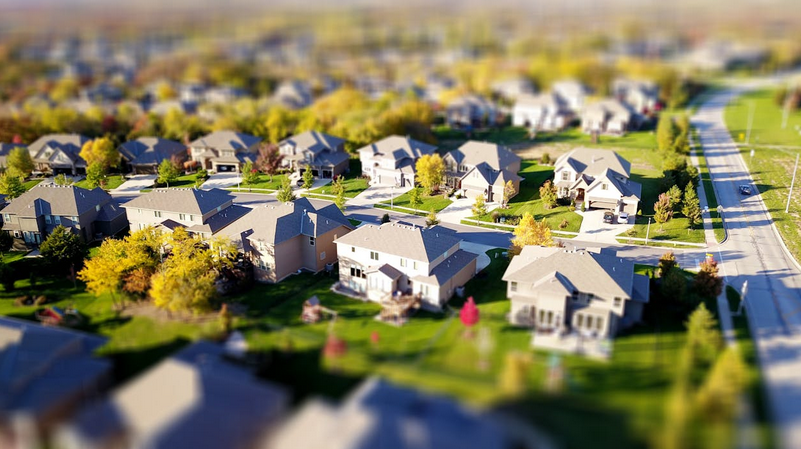

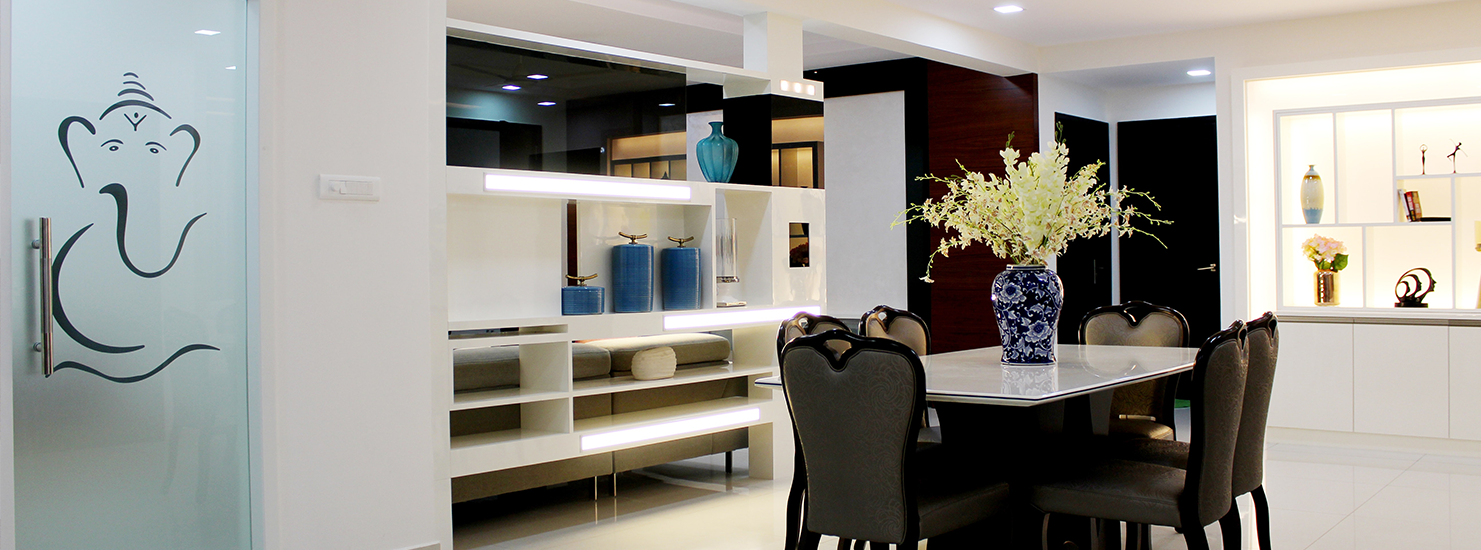


 Smart home features offer more than convenience. They bring a sense of control and efficiency to owners. A home that automatically adjusts temperature or locks itself at night feels safer and more cost-effective. This growing demand for integrated technology is turning smart features into key drivers of property value. Buyers are willing to pay more for homes that already have these systems in place.
Smart home features offer more than convenience. They bring a sense of control and efficiency to owners. A home that automatically adjusts temperature or locks itself at night feels safer and more cost-effective. This growing demand for integrated technology is turning smart features into key drivers of property value. Buyers are willing to pay more for homes that already have these systems in place.
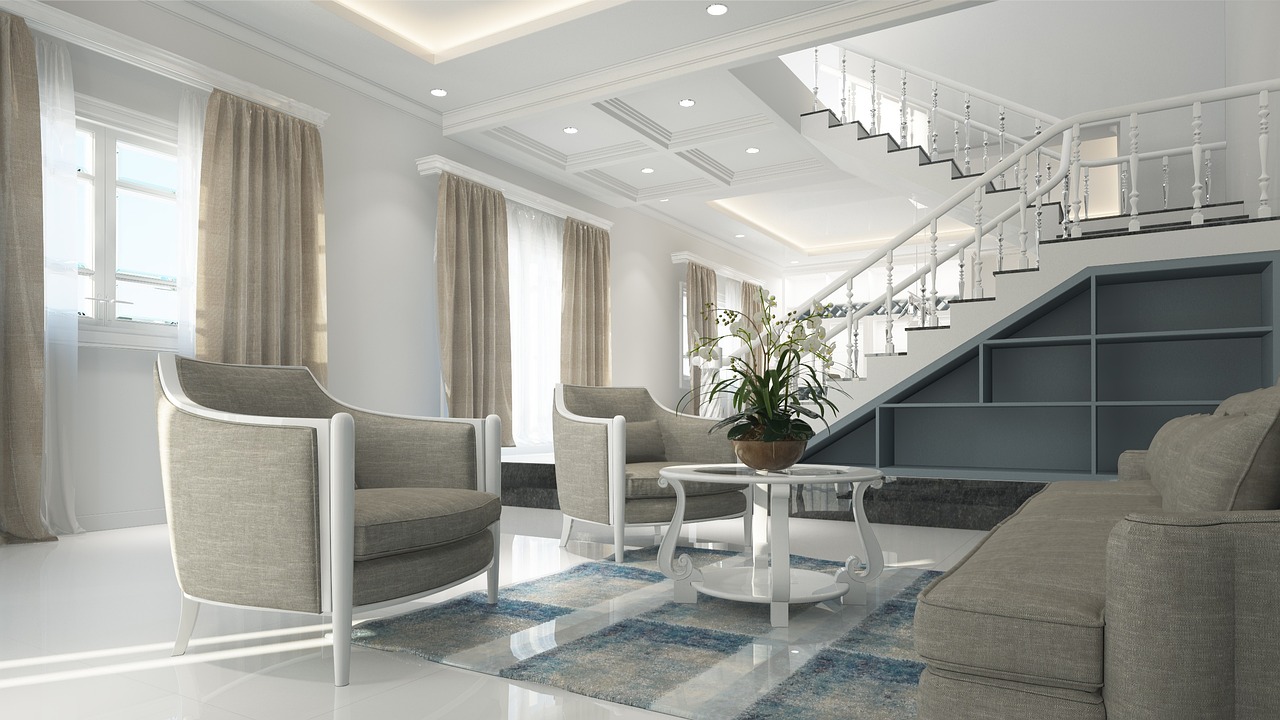
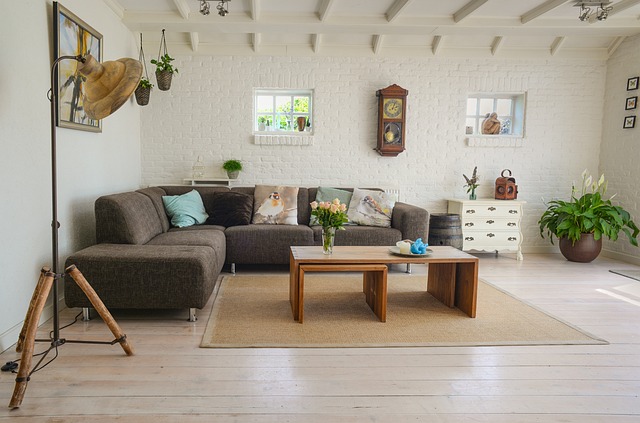
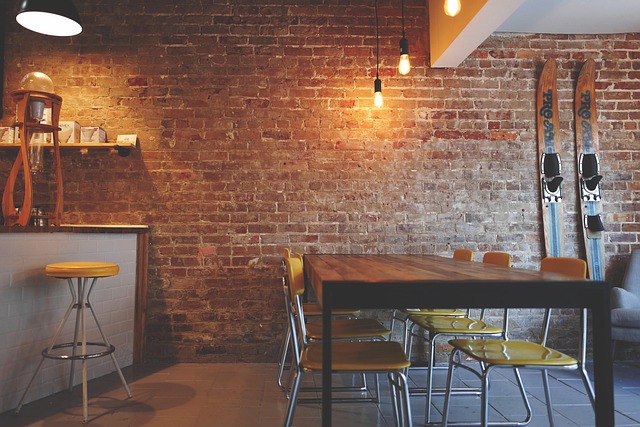

 Professional cleaners don’t just tidy up—they also target areas of the home that are prone to germs, allergens, and bacteria. From disinfecting high-touch surfaces to removing mold and dust mites, a thorough cleaning helps prevent illnesses and improves indoor air quality. This is especially valuable for households with children, elderly family members, or anyone with allergies or respiratory conditions. Regular deep cleaning ensures that your home isn’t just clean on the surface but is also safer and healthier overall.
Professional cleaners don’t just tidy up—they also target areas of the home that are prone to germs, allergens, and bacteria. From disinfecting high-touch surfaces to removing mold and dust mites, a thorough cleaning helps prevent illnesses and improves indoor air quality. This is especially valuable for households with children, elderly family members, or anyone with allergies or respiratory conditions. Regular deep cleaning ensures that your home isn’t just clean on the surface but is also safer and healthier overall.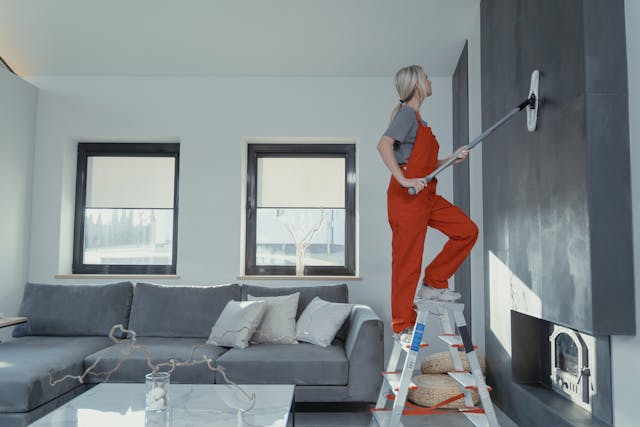


 Creating a luxurious front yard begins with expert design and planning. Professional landscapers possess the knowledge to assess your space, taking into account its unique features like sunlight, soil type, and drainage. They can craft a cohesive plan that harmonizes plants, hardscapes, and outdoor structures. This thoughtful approach ensures every element complements one another rather than competing for attention. Additionally, professionals stay updated on the latest trends and techniques in landscaping. They can suggest innovative ideas tailored to your tastes while ensuring functionality.
Creating a luxurious front yard begins with expert design and planning. Professional landscapers possess the knowledge to assess your space, taking into account its unique features like sunlight, soil type, and drainage. They can craft a cohesive plan that harmonizes plants, hardscapes, and outdoor structures. This thoughtful approach ensures every element complements one another rather than competing for attention. Additionally, professionals stay updated on the latest trends and techniques in landscaping. They can suggest innovative ideas tailored to your tastes while ensuring functionality. A beautifully landscaped front yard can significantly elevate your property’s appeal. Potential buyers often first notice the exterior when looking at homes. A well-maintained landscape creates a strong first impression. Investing in luxury landscaping is more than just aesthetics; it adds value to your home. Homes with stunning outdoor spaces typically sell faster and at higher prices compared to those without. Quality landscaping elements, such as unique plant selections and artistic hardscaping features, can set your property apart from others in the neighborhood. This distinction draws attention and interest from prospective buyers.
A beautifully landscaped front yard can significantly elevate your property’s appeal. Potential buyers often first notice the exterior when looking at homes. A well-maintained landscape creates a strong first impression. Investing in luxury landscaping is more than just aesthetics; it adds value to your home. Homes with stunning outdoor spaces typically sell faster and at higher prices compared to those without. Quality landscaping elements, such as unique plant selections and artistic hardscaping features, can set your property apart from others in the neighborhood. This distinction draws attention and interest from prospective buyers.
 The foundation of a secure fence gate starts with the material it is made from. Opt for gates constructed from high-quality, durable steel or wrought iron materials. These materials are inherently resistant to tampering and physical attacks, making them a strong deterrent against intruders. Avoid gates made from wood or aluminum, as these are easier to breach and less durable. For instance, steel gates offer strength and longevity, ensuring that your gate remains intact and functional over the years.
The foundation of a secure fence gate starts with the material it is made from. Opt for gates constructed from high-quality, durable steel or wrought iron materials. These materials are inherently resistant to tampering and physical attacks, making them a strong deterrent against intruders. Avoid gates made from wood or aluminum, as these are easier to breach and less durable. For instance, steel gates offer strength and longevity, ensuring that your gate remains intact and functional over the years.

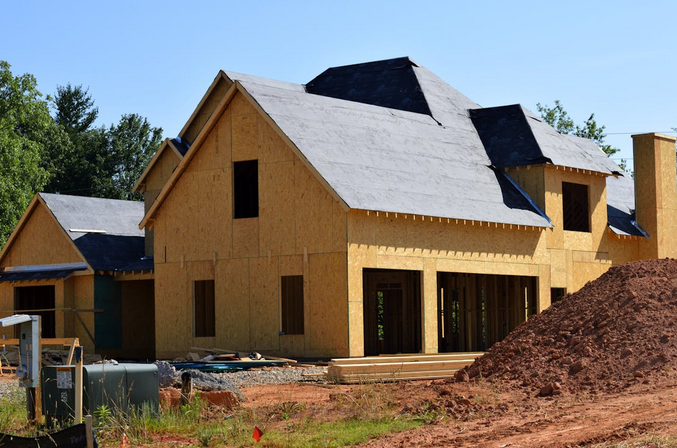
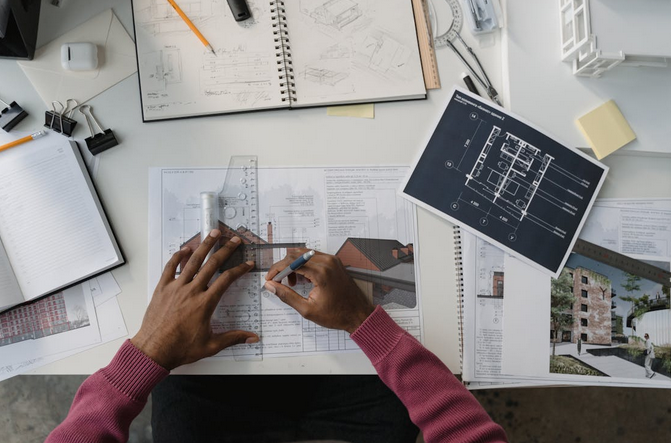
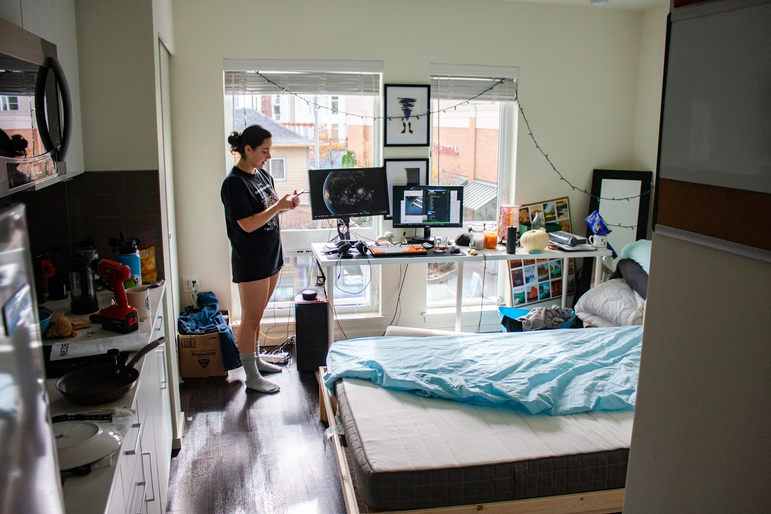






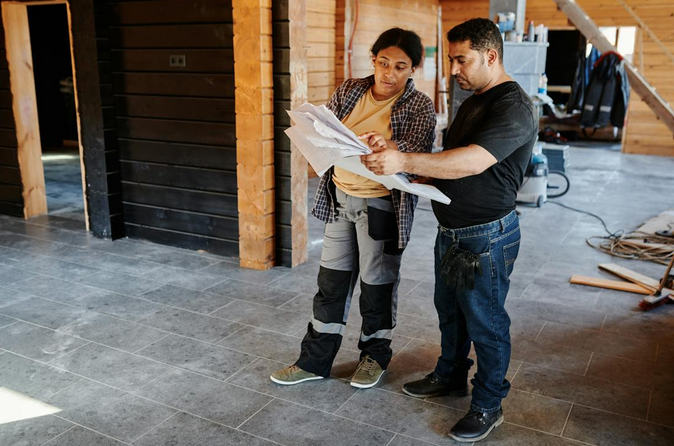
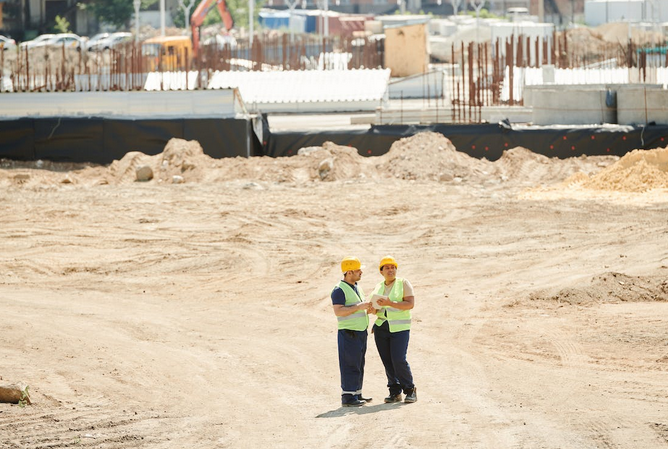
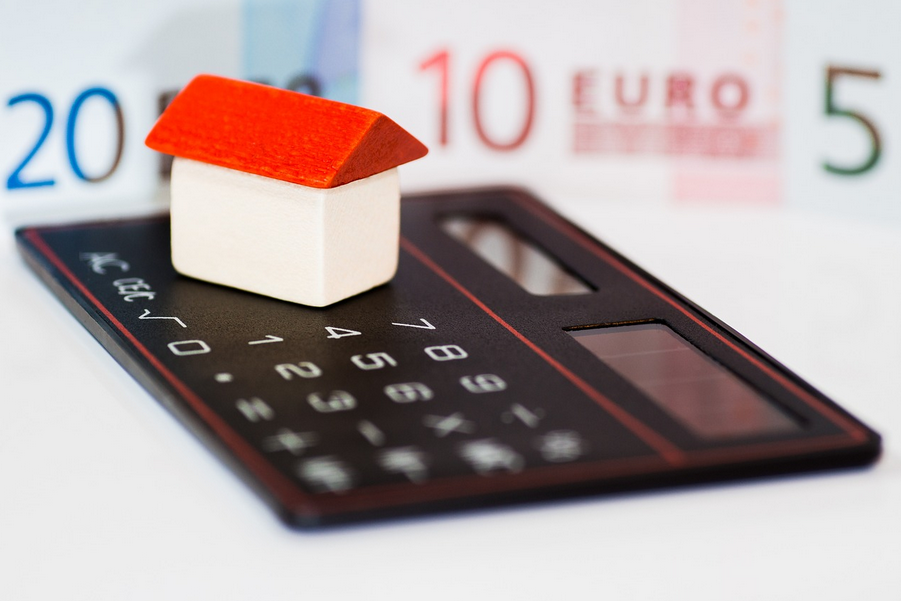




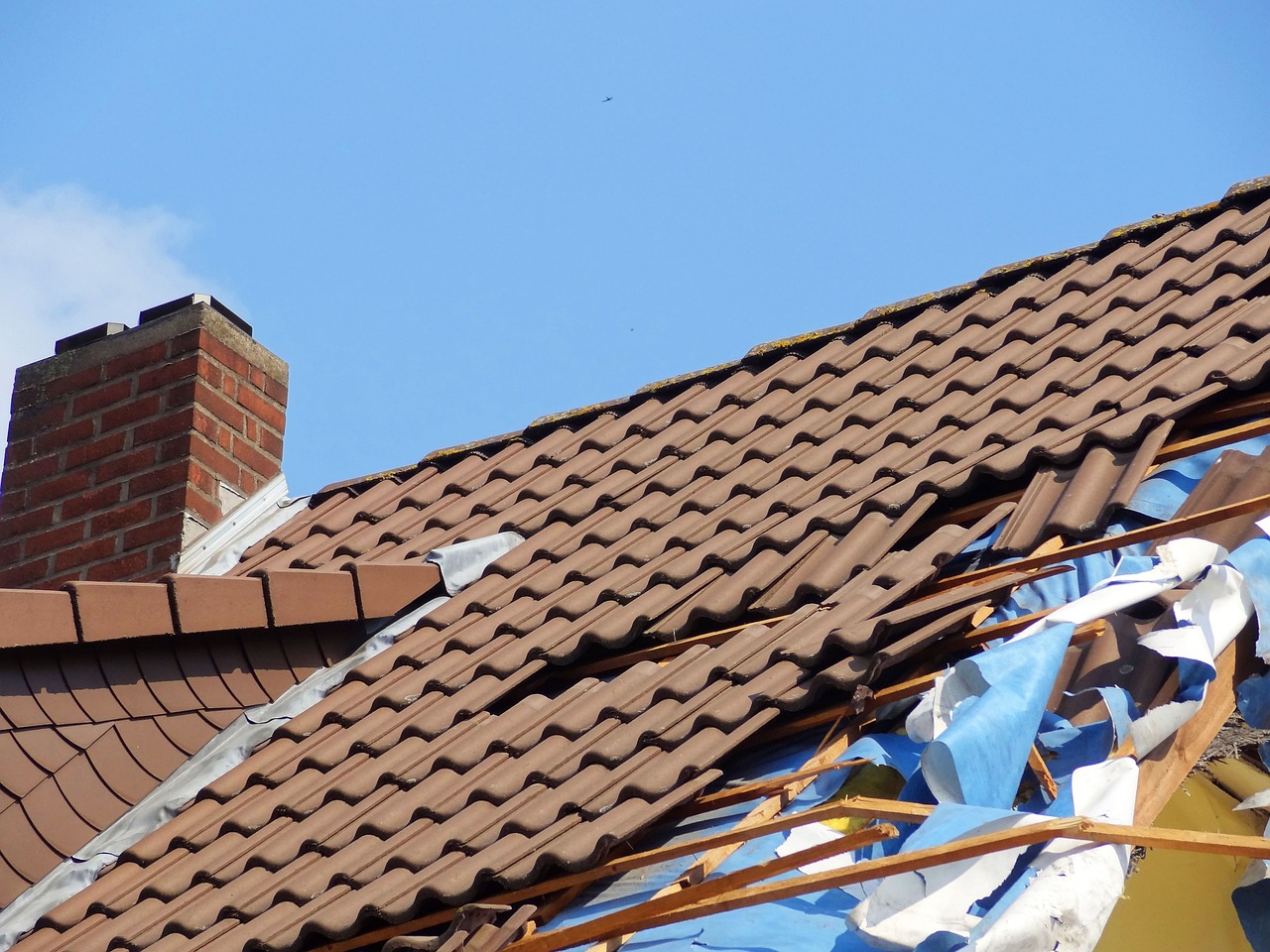
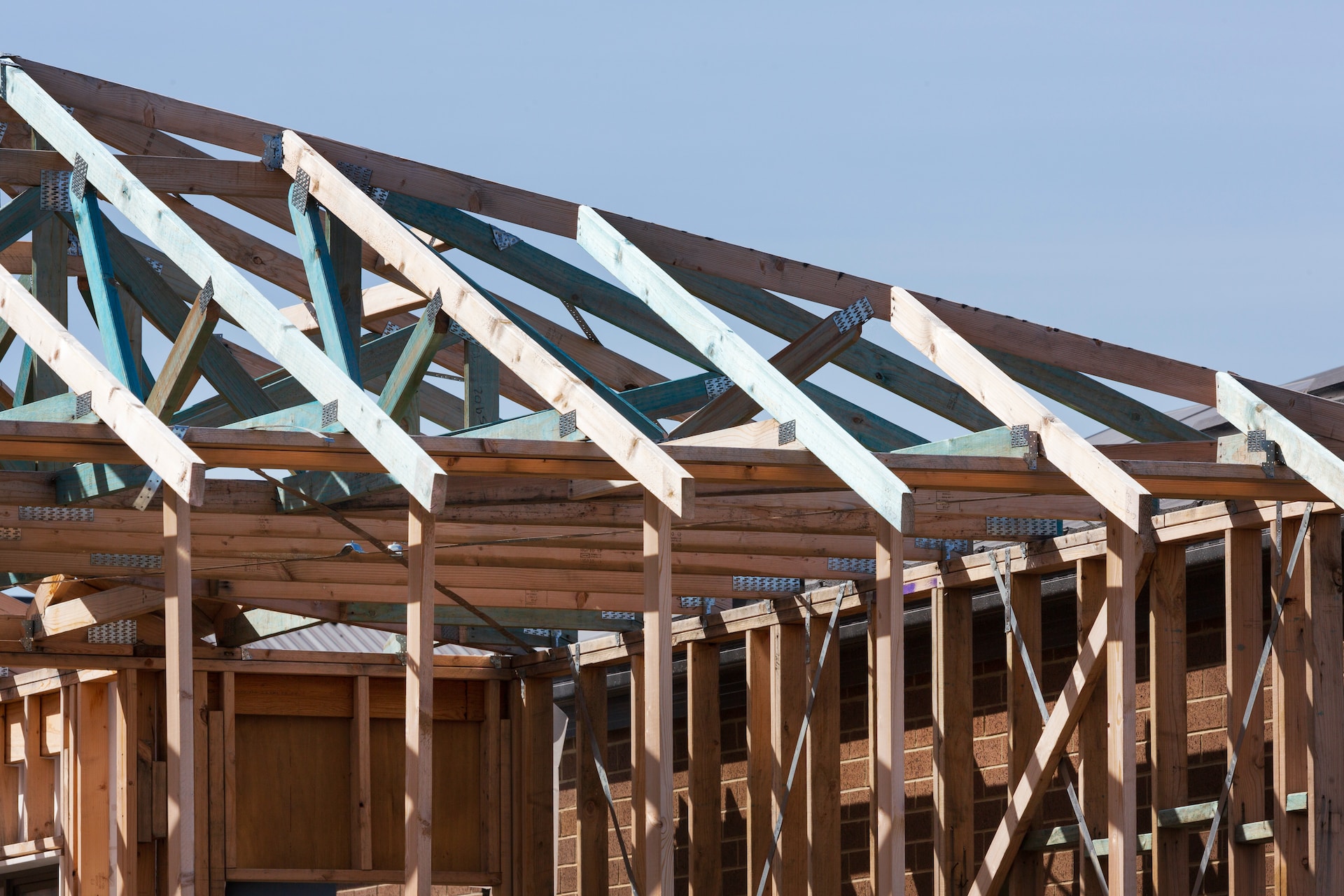
 Its strength and structural integrity make it an ideal choice for constructing tall structures that are not only pleasing to the eye but also environmentally friendly on many levels. One of the key advantages of mass timber in multi-story buildings is its impressive fire resistance. Contrary to popular belief, wood can actually perform better than steel or concrete in fire situations due to its charring effect. This means that in the event of a fire, the outer layer of wood will charge and protect the inner layers from further damage. In addition to its safety features, mass timber offers incredible design flexibility.
Its strength and structural integrity make it an ideal choice for constructing tall structures that are not only pleasing to the eye but also environmentally friendly on many levels. One of the key advantages of mass timber in multi-story buildings is its impressive fire resistance. Contrary to popular belief, wood can actually perform better than steel or concrete in fire situations due to its charring effect. This means that in the event of a fire, the outer layer of wood will charge and protect the inner layers from further damage. In addition to its safety features, mass timber offers incredible design flexibility.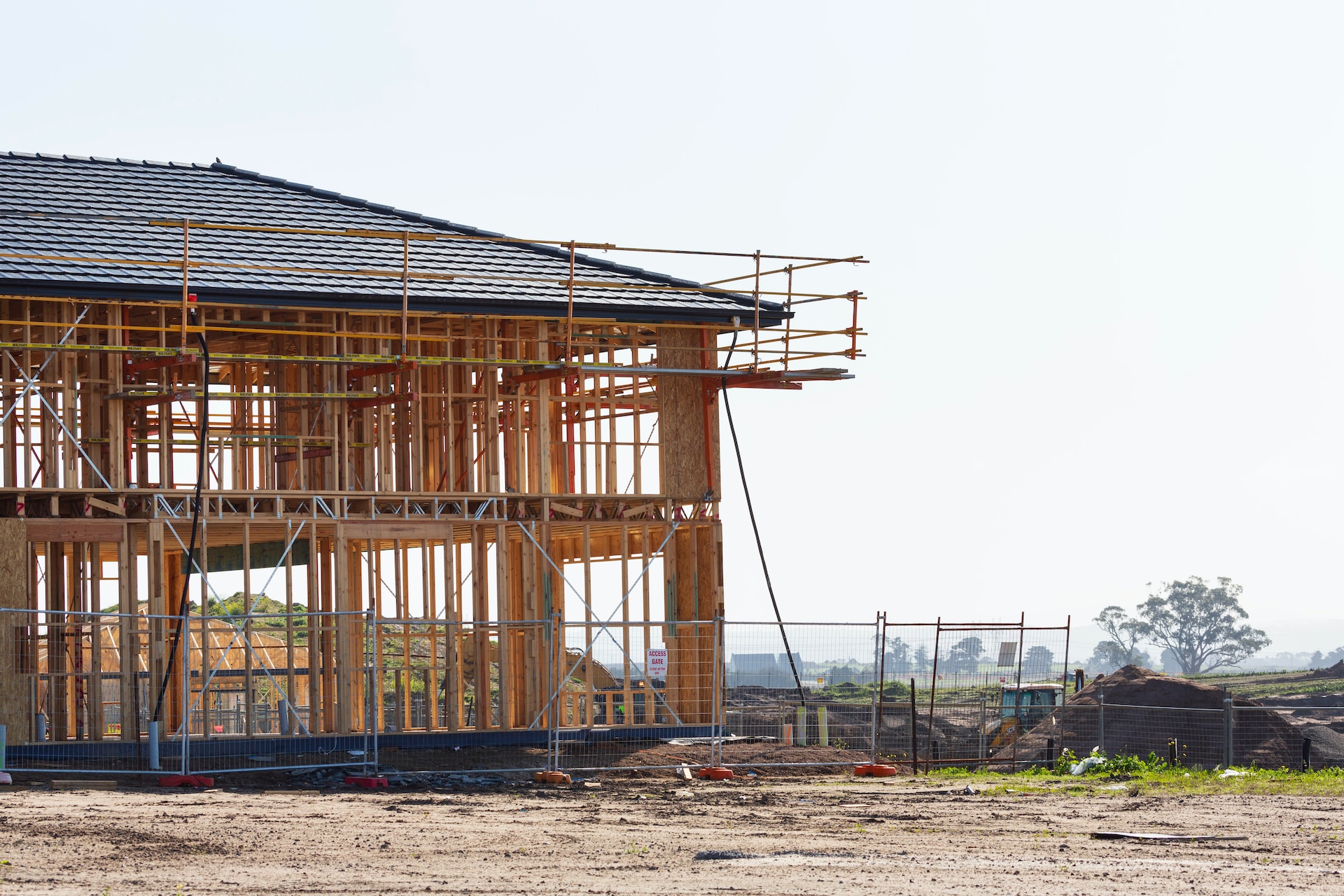
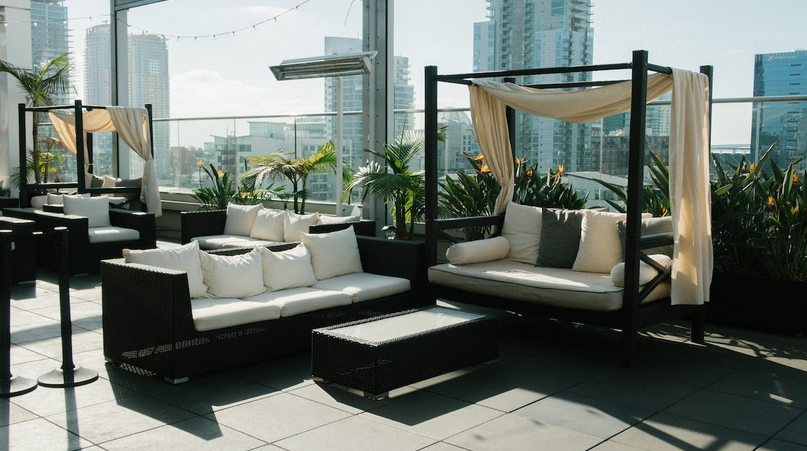

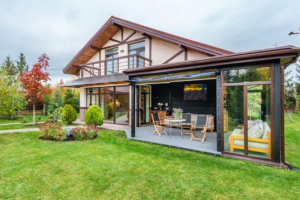 Flower gardening is a great way to add color, fragrance, and beauty to your outdoor living space. If you’re ready to take your flower garden to the next level, you can make plenty of upgrades to make it stand out.
Flower gardening is a great way to add color, fragrance, and beauty to your outdoor living space. If you’re ready to take your flower garden to the next level, you can make plenty of upgrades to make it stand out. To truly enjoy your outdoor living space, you can try creating the right ambiance. And one way to do that is by installing outdoor lights. Outdoor lighting can transform your yard into a magical wonderland and make it super attractive.
To truly enjoy your outdoor living space, you can try creating the right ambiance. And one way to do that is by installing outdoor lights. Outdoor lighting can transform your yard into a magical wonderland and make it super attractive.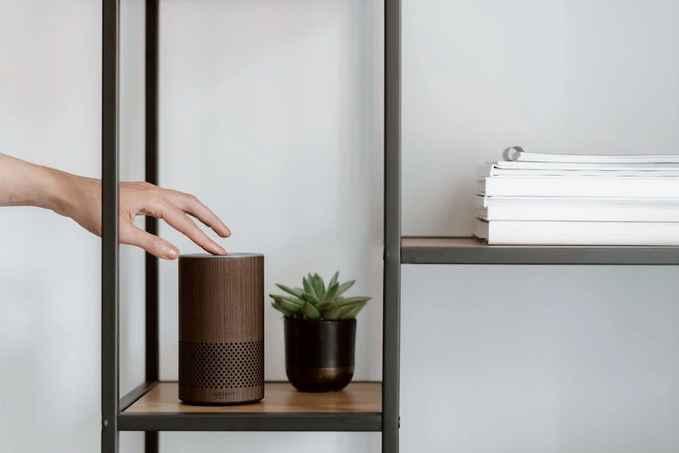
 A smart speaker is probably the most popular home gadget on the market right now. And it’s easy to see why. An intelligent speaker allows you to control your lights, music, and other smart devices with only your voice. Plus, many of them come equipped with virtual assistants like Alexa or Google Assistant, which can make your life much easier. In fact, with this type of technology, you can easily set alarms, create to-do lists, and even order groceries, all with just your voice. So, if you’re looking for a way to make your life a little easier, a smart speaker is a must-have home device.
A smart speaker is probably the most popular home gadget on the market right now. And it’s easy to see why. An intelligent speaker allows you to control your lights, music, and other smart devices with only your voice. Plus, many of them come equipped with virtual assistants like Alexa or Google Assistant, which can make your life much easier. In fact, with this type of technology, you can easily set alarms, create to-do lists, and even order groceries, all with just your voice. So, if you’re looking for a way to make your life a little easier, a smart speaker is a must-have home device.
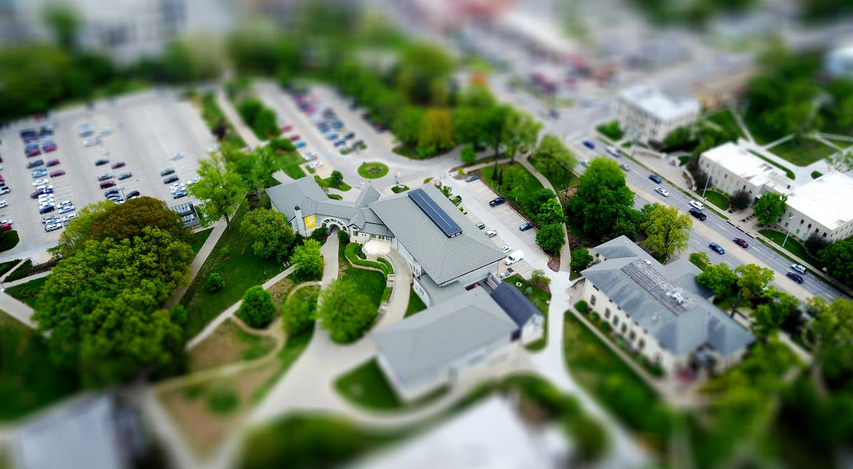
 One of the most popular types of homes in Dubai is the villa. Villas are private residences that typically come with their gardens and outdoor spaces. They’re perfect for families who want to enjoy some privacy and luxury. Many villas in Dubai come with pools and other amenities, making them even more appealing. Villas tend to be more expensive than other types of homes. Also, they often require longer leases, so be sure to plan. Lastly, villas typically come unfurnished, so you’ll need to factor in the cost of furniture and other household items.
One of the most popular types of homes in Dubai is the villa. Villas are private residences that typically come with their gardens and outdoor spaces. They’re perfect for families who want to enjoy some privacy and luxury. Many villas in Dubai come with pools and other amenities, making them even more appealing. Villas tend to be more expensive than other types of homes. Also, they often require longer leases, so be sure to plan. Lastly, villas typically come unfurnished, so you’ll need to factor in the cost of furniture and other household items. Penthouses are another popular type of home in Dubai. These luxury residences offer stunning views of the cityscape and come with all the bells and whistles you want. From private pools to concierge services, penthouses have it all.
Penthouses are another popular type of home in Dubai. These luxury residences offer stunning views of the cityscape and come with all the bells and whistles you want. From private pools to concierge services, penthouses have it all. Another option for those who want a bit more space is the townhouse. These homes are similar to villas in that they offer private outdoor spaces and gardens. However, they’re typically smaller than villas and come with fewer amenities.
Another option for those who want a bit more space is the townhouse. These homes are similar to villas in that they offer private outdoor spaces and gardens. However, they’re typically smaller than villas and come with fewer amenities.
 One of the essential steps in woodworking is sanding. This is because a smooth surface is necessary for achieving a professional finish. Sanding can be done by hand or with a machine, but you need to make sure you’re using the correct grit of sandpaper.
One of the essential steps in woodworking is sanding. This is because a smooth surface is necessary for achieving a professional finish. Sanding can be done by hand or with a machine, but you need to make sure you’re using the correct grit of sandpaper. This is something that many woodworkers overlook, but it’s essential to know the moisture content of your wood before you start working with it. This is because different woods have different ideal moisture contents.
This is something that many woodworkers overlook, but it’s essential to know the moisture content of your wood before you start working with it. This is because different woods have different ideal moisture contents.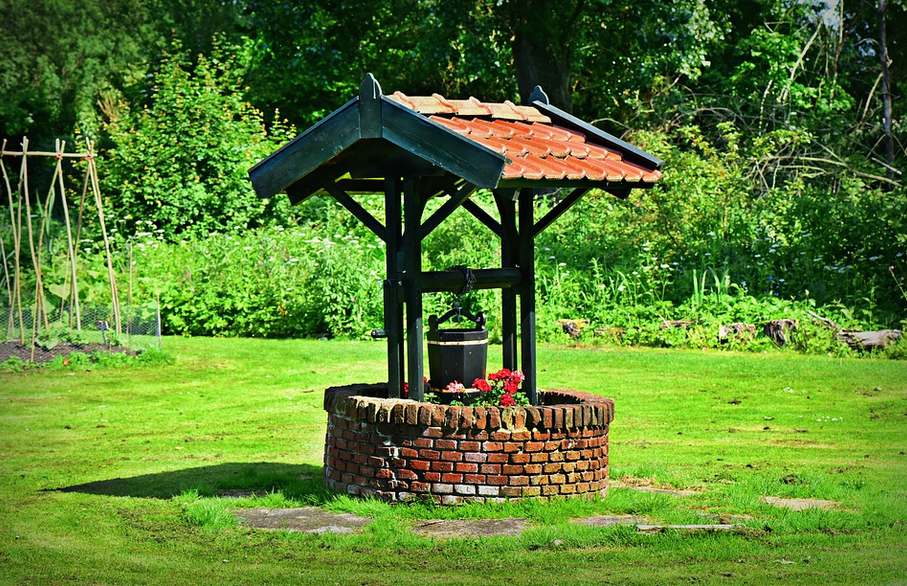
 The first step is to get your water tested. You can order a kit from the EPA or your state’s health department. The kit will test for Coliform bacteria, nitrates, and pH levels. If any of these levels are off, it could mean that your water isn’t safe to drink. If you find that your water isn’t safe, you can take steps to correct the issue. Moreover, if your water comes from a well on your property, you are responsible for making sure it meets safe drinking water standards. You can do this by testing your water and treating it if needed.
The first step is to get your water tested. You can order a kit from the EPA or your state’s health department. The kit will test for Coliform bacteria, nitrates, and pH levels. If any of these levels are off, it could mean that your water isn’t safe to drink. If you find that your water isn’t safe, you can take steps to correct the issue. Moreover, if your water comes from a well on your property, you are responsible for making sure it meets safe drinking water standards. You can do this by testing your water and treating it if needed. Once you have the
Once you have the 


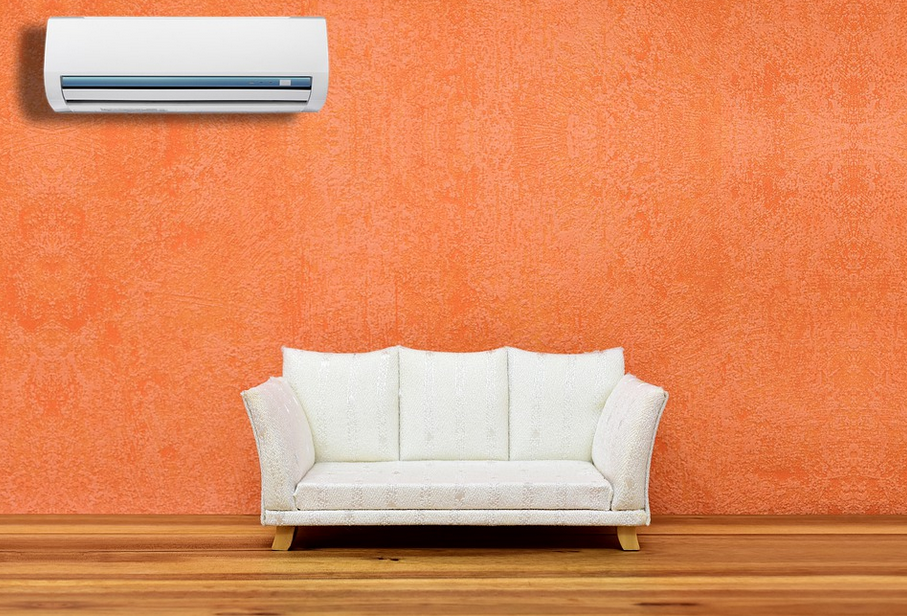
 One of the most important things you can do to maintain your air conditioner is clean. Over time, dirt and dust will build upon the unit’s coils and fins. This can decrease efficiency and cause the unit to work harder than it needs to. To clean the coils and fins, turn off the power to the AC unit and use a garden hose to spray them down. Be sure to avoid getting water inside the electrical components of the unit.
One of the most important things you can do to maintain your air conditioner is clean. Over time, dirt and dust will build upon the unit’s coils and fins. This can decrease efficiency and cause the unit to work harder than it needs to. To clean the coils and fins, turn off the power to the AC unit and use a garden hose to spray them down. Be sure to avoid getting water inside the electrical components of the unit.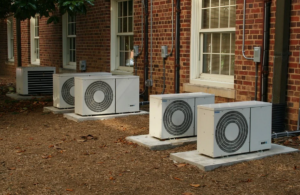 If your air conditioner is not draining properly, it can cause several problems. First, the unit will not operate as efficiently. Second, standing water can lead to mold and mildew growth. To unclog the condensate drain tube, remove it from the AC unit and use a small brush or pipe cleaner to clear the debris. Be sure to reattach the drain tube properly before turning on the AC unit.
If your air conditioner is not draining properly, it can cause several problems. First, the unit will not operate as efficiently. Second, standing water can lead to mold and mildew growth. To unclog the condensate drain tube, remove it from the AC unit and use a small brush or pipe cleaner to clear the debris. Be sure to reattach the drain tube properly before turning on the AC unit. Having a home water filtration system help you to save on bottled water and other drinks. You’ll no longer have to buy expensive, unhealthy bottled water; instead, you can drink filtered tap water straight from your kitchen faucet. In addition, you may find that you don’t need to buy as many soft drinks or juices since filtered water is healthier and more refreshing than most beverages.
Having a home water filtration system help you to save on bottled water and other drinks. You’ll no longer have to buy expensive, unhealthy bottled water; instead, you can drink filtered tap water straight from your kitchen faucet. In addition, you may find that you don’t need to buy as many soft drinks or juices since filtered water is healthier and more refreshing than most beverages. Another benefit of having a home water filtration system is that you’ll have healthier hair and skin. This is because filtered water is free of chlorine and other harmful chemicals, dry out your skin, and cause brittle hair. Moreover, there are many different types of home water filtration systems to choose from. They come in a variety of sizes and styles, so you’ll be able to find one that fits your home’s unique needs and requirements. For example, there is whole-house filtering equipment that can remove contaminants from the entire household; this includes bathing and laundry water. There are also under-sink systems that you can install beneath your kitchen or bathroom sink.…
Another benefit of having a home water filtration system is that you’ll have healthier hair and skin. This is because filtered water is free of chlorine and other harmful chemicals, dry out your skin, and cause brittle hair. Moreover, there are many different types of home water filtration systems to choose from. They come in a variety of sizes and styles, so you’ll be able to find one that fits your home’s unique needs and requirements. For example, there is whole-house filtering equipment that can remove contaminants from the entire household; this includes bathing and laundry water. There are also under-sink systems that you can install beneath your kitchen or bathroom sink.…